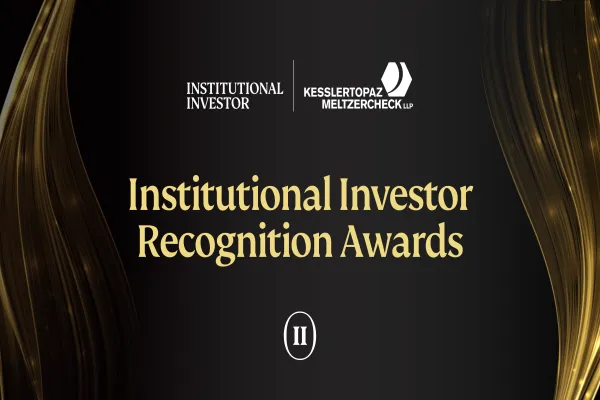In a return to what some call the old school of investing, funds that target a level of return rather than a benchmark have become increasingly attractive to investors. During the 1970s and ’80s, according to Guy Stern, head of multiasset and macro investing at Standard Life Investments in Edinburgh, Scotland, “the asset management industry created the cult of relative value,” which focused on beating benchmarks. Investors were told they should invest in asset classes “and then spend lots of time and energy and money to try to find managers that could beat the benchmark for that asset class,” he continues.
By contrast, one asset class that allows managers a charter of maximum flexibility to achieve target returns is global multiasset funds. Such fund managers can invest in any asset around the world and engage in any trades and strategies that can help the fund deliver its targeted return — but only if such approaches have relatively low risk. Such targeted performance is a common approach among global unconstrained multiasset funds.
“What we’re trying to do is create an outcome,” says Stern, who manages Standard Life’s $62.2 billion Global Absolute Return Strategies (GARS) portfolio, one of the largest global unconstrained multiasset funds. In his case, that outcome is a return of cash plus 5 percent, achieved in a way that minimizes risk and volatility.
GARS is part of a class of global multiasset funds that includes balanced funds and tactical asset funds, under Marietta, Georgia–based data firm eVestment’s classification system. The class received net inflows of roughly $28.9 billion in the first nine months of 2014, according to eVestment — the market segment with the highest level of net inflows among 29 broad, aggregated investment fund classes tracked by eVestment. GARS had a net outflow of $295.1 million in the third quarter, according to eVestment, although for most prior quarters in the past year, GARS has been seeing large net inflows. Stern estimates these at about $1.6 billion to $1.7 billion per quarter. Another of the larger funds in this category, the GMO Benchmark-Free Allocation Fund had a net inflow of $2.37 billion in the third quarter of 2014 alone, representing a 9.7 percent gain in assets, which takes a wide view on what’s happening in the market.
Ben Inker, co-head of asset allocation at GMO in Boston, explains that the broad mandate of the GMO Benchmark-Free Allocation Fund allows its fund managers to move quickly to take advantage of a changing landscape of opportunities — or take illiquid positions when others might want to avoid them. Last year the fund took a strategy it had never tried before — merger arbitrage — and then expanded exposure from zero to 10 percent before pulling back to 7 percent. Now GMO is moving to buy more assets in emerging-markets equities and debt. Value is the attraction in both emerging-markets bonds and equities, and in the case of equities, GMO is willing to take outsize country exposures if the value is there. “The strong bias here is that we like cheap,” says Inker. That might mean buying more equities in Russia than in Brazil right now, he explains.
GMO has a different perspective on emerging-markets debt. “We’re looking to capture a broad range of discounted bonds,” Inker explains. In GMO’s view, a lot of participants in emerging-markets bonds are “quite focused on trying to move from country to country as the outlook for countries shift, which means they need to run a liquid portfolio,” Inker says. Not so GMO. Inker and his team prefer to go for the yield and be willing to hold on to less liquid bonds. “While it would be great to know who was defaulting, one of the things that’s pretty clear is that if you own bonds that have higher yields and lower prices, if the country doesn’t default, you win, because you’ll have a higher-yielding portfolio,” Inker says. “And if the country does default, you’ll lose less because you got it at a lower price.”
Among the large investors paying particularly close attention to unconstrained multiasset funds are retirement plans. Defined benefit plans “are looking to find ways to reduce risk while not reducing returns too much,” says Inker. For defined contribution plans, the GMO fund has been “something of a dynamic lever, a place you can allocate to allow the whole portfolio to move around its allocations as the opportunity set changes.” In the case of GARS, the California Public Employees’ Retirement System has partnered with Standard Life as an external manager.
Not all global multiasset funds prospered last year. Some saw significant outflows in the third quarter of 2014, according to eVestment. The largest was the $1.58 billion net outflow at Pacific Investment Management Co.’s $13.3 billion Global Multi-Asset Strategy Fund, representing a 10.6 percent decline in assets. The $44 billion PIMCO All Asset Fund had a net outflow of $715 million in the third quarter, a 1.6 percent decline in assets under management.
The fact that global multiasset funds are benchmark-free and instead offer a targeted return appears to be at the heart of the investment approach, according to Inker. “I think it has struck a chord with some investors who are looking much more seriously at what is referred to as outcome-oriented investing — investing with the idea of earning a return — rather than tracking a benchmark,” says Inker.
Get more on equities and on pensions.






